
2021 has been like no other in the history of UK Trad. The long-awaited renaissance of hard Trad headpointing is here, as the global rise in climbing training finally begins to feed into a meteoric surge of hard British Trad ascents. The old times, when a whole year would pass by with scarcely any difficult new routes, are well and truly over. The new era of headpointing is here, with an explosion of standards in the Lake District, The North York Moors, Central Scotland and North Wales. It is no longer simply a handful of the same names spawning new lines, rather a whole host of climbers that have burst onto the scene, some new to the world of pre-practised ascents, and all redefining what may constitute a reasonable day at the crag. For those of us who have waited for a burgeoning hard Trad culture, the watershed moment has arrived.
In this round-up, we'll take you through how the year panned out – from frosty spring mornings of doubt on the east coast, to high mountain enduro escapades in September. Here we go…
April:
April is often a brilliant time to climb in the North York Moors, but this year proved exceptional, with a prolonged dry and very low humidity season. 15-year-old Tom Pearce kick-started the year's hard Trad by making the first repeat of The Aghori (E9 7a) (E9 7a), as well as the third ascent of Divine Moments Of Truth (E9 6c) (E9 6c). It wasn't quite clear what was more impressive, Tom's climbing ability after less than a year of leading, or his mature approach to attempting bold lines.
In a refreshingly positive outlook on the future of the top end, Tom commented:
"I think the Trad scene is pretty alive to be honest, there's been loads of talk about how it is dying in the UK, but then all these ascents keep going down this year and I can't really see this stopping anytime soon. Climbers are going to get better, and bolder, and harder routes are going to keep being found and climbed. There will always be more rock to have a go at, so who knows what other lines are out there? And yeah, there are probably fewer Trad climbers in the younger generation, but who's to say that there won't be more in a couple of years: we just don't know yet." I'm sure this isn't the last we've heard from Tom.
Tom's psyche inspired me to pull out the stops on my own project and finally get my teeth stuck into a lead, making the first ascent of Immortal (E11 7b), at the ever bountiful Maiden's Bluff. This outing takes the wall right of Sky Burial (E7 6a) on very small crimps, suspect footholds and dynamic lunges, with a British 7b crux, protected by poor skyhooks.
You can watch more of the North York Moors in the film Fall Theory which is playing at Kendal Mountain Festival. Buy tickets here and watch the trailer below:
May:
As May ticked over, the peaceful Glens of Scotland got their share of the action. There are some lines in climbing that seem to capture the very essence of adventure in our sport. One of these is the route Hold Fast, Hold True (E10 7a). The original Hold Fast (E9 7a) (E9 7a) was climbed by Dave MacLeod in 2002, with a hard move at highball height, followed by a sustained crimpy section where you really don't want to fall off. This line traversed into an E5 at just over half-height, leaving the direct finish as an obvious challenge for Julian Lines to solo in 2013. This ascent was beautifully captured in a stunning photo by Dave Cuthbertson at the time, depicting the total simplicity of a hard solo in the Highlands: the glen, the climber, the rock, the sky. Nothing more.
The full line Hold Fast, Hold True (E10 7a) doesn't offer any more difficult moves, but does mean you're pulling on small crimps for even longer (and even higher!), with the fall from the very top still to be tested. A most brilliant statistic for this line was that it had had only one ascent, but had caused three ground falls – one prior to Jules' first ascent and then from Dave MacLeod and Charlie Woodburn on their unsuccessful bids to repeat it. The videos of these falls are perhaps some of the most extreme ever captured on video.
And so it was with much intrigue that news gradually came from the secretive Scottish scene that Iain Small had made the second ascent this May. Iain adds this ascent to a huge catalogue of first ascents and early repeats up to E8, with many of the finest and most coveted challenges in Scotland being established by this man. As with his other lines, the details of this first ascent are unfortunately to remain a mystery as, much like Jules, Iain is no fan of the limelight. He is, however, without doubt, one of the most respected climbers in Scotland.
Down in the Lake District and also in May, although not reported until the end of the year, Craig Matheson made the long-coveted first ascent of Hard Cheese (E10 7a). The line had been tried by John Dunne many years previously and a few others had inspected in the interim, all giving up on the project due to it being evidently really hard. Even Craig himself gave up on the line after a first look in 2015, dismissing the climbing as too marginal, sustained and difficult. It was not until he worked his way through most of the hard climbing in the Lake District that he returned with serious intentions of trying to link the route on a top rope. The idea of then setting out on the lead required a further monumental change in his preparations, including the use of a pre-placed RP; quickdraws velcroed to his T-shirt; and rags (rather than bags) of chalk.
His first attempts didn't go quite to plan and his climbing partner (and dad) Rob described to me, with great animation, the moment that he parted company with the rock and came tumbling down onto the rock ledge. Craig missed the mats and couldn't walk properly for a number of weeks, commenting, "My ankles, knees and coccyx were battered. I was incredibly lucky not to have to be airlifted out."
No one quite knows how significant Craig's new line is, as no one I've spoken to has managed to actually get into the very steep groove to try the moves and the nominal E10 7a Craig has opted for is likely rather conservative, but at the standard of F8c and with serious fall potential, it is likely one of the most challenging routes in the world. Perhaps of even more interest is the ground that this new line breaks in terms of style. The advent of bouldering mats has transformed highball bouldering, but there are still very few Trad routes that have relied on crashmat protection to push the envelope on height and seriousness, with the hybrid 'Ropeball' style still to properly take off. Next generation: take note.
June:
June can be a bit of a hit and miss time of year in North Wales, but James Taylor took advantage of particularly cool conditions to climb his project that became Prisoners of the Sun (E10 7a). James had been trying the project at Rhoscolyn for over three years and found that it packed F8b climbing and a British 7a move into a position where a fall was not an option. For this reason, James thought the line worthy of E10 7a. The climb was repeated by Jim Pope a few months later, who suggested a minor downgrade, but then appeared to have quite a lot of doubt about his own comments, as he admitted that he is potentially just in very good shape at the moment and that he knows nothing about grading anyway. Oh, how we all wish we were fit enough to not know if an E10 was really an E10!
Also in June, Steve McClure managed to make the second ascent of Neil Gresham's 2012 deep water solo Olympiad (8b) (F8b), using a rope instead of soloing it above the sea. Neil was a pioneer of DWS in the UK, with Olympiad being the pinnacle of the established lines in that style. The fickle conditions on the wall and the difficult nature of the climbing had meant that the route was still to be repeated as a DWS and Steve proposed a Trad grade of E10 6c when using a rope, rather than the sea. This came on top of Steve's repeat of Tom Randall's The Final Round (E8 6c) (E9 6c) and several other E8s, including a flash of Impact Day (E8 6c) at Pavey Ark.
September:
The true magnitude of the year's events only became apparent in September. A dry spell left the high hills in good condition, enabling Neil Gresham to climb his Pavey project, birthing Lexicon (E11 7a). The line shares a sustained, but relatively easy, start with Impact Day, before stepping right and placing some adequate protection in a break. From here a gently overhanging and sustained sequence on small holds blasts up the imposing headwall. Neil proposed the grade of E11 7a, due to the high standard of the climbing and uncertain consequences of a very large potential fall, which would make it only the fourth route to be given this grade.
Neil commented on the future of British climbing:
"For me, the really important thing is that the next generation aren't bottlers. Training methods will need to change. More time needs to be spent on the hangboard visualising what it's like to hit a boulder-strewn slope from 100ft. Cheetah will need to make bespoke volumes with hairline cracks so that RPs can be placed in the middle of coordination moves. The Olympic team coaches will need to be bumped off and John Redhead will need to be dragged out of his house, ranting and clutching his testicles, to head up the performance pathway. Weak will be the new strong. Only when total f#%kin chaos reigns will the next generation of Trad climbing be born."
Hear more from Neil at Kendal Mountain Festival during the Patagonia session, hosted by UKC's very own Rob Greenwood. Buy tickets here.
News spread fast of a potentially survivable F8b+ (and one with an E11 tag) and soon half the climbers in the country seemed to be swapping beta on it. It didn't take long for the second ascent to come, predictably perhaps, at the hands of Steve McClure. Steve is now racking up a hefty Trad ticklist, with ascents of multiple E10s, including Choronzon and GreatNess Wall, as well as onsights and flashes of multiple E8s.
Dave MacLeod was one of half a dozen people who inspected the line after Neil's ascent, commenting, "I've had a quick play on Lexicon and I'm really keen to go back to it when it's in condition again. I really like the rock there and I thought the climbing was excellent quality, well worth travelling for. It looked like Neil put a lot of focus and preparation into doing the route, which I always like to see and respect."
Back home in Scotland, Dave climbed the bold wall of Mnemosyne (E9 6c) (E9 6c) on Ben Nevis North Face, providing a very fiddly-to-protect, but fantastic-looking F8a. Dave commented:
"I was really pleased with my route on Ben Nevis. It's a classic example of the logistical and psychological challenges of hard Trad on mountain cliffs. I opted for a tough down climb after placing the gear. I noticed some comment on the route that people felt that would be a faff. Damn right it is! But the alternative is not great either - pushing on and doing the crux cross through while pumped from fiddling a dozen RPs. There are a few ways to approach it, but the point is all of them are hard or dangerous. That's what earns it the E9. The climbing itself is only 8a. But it's Trad climbing - the actual climbing is only one part of the issue. The climbing is also great, on lovely rock and very aesthetic crimps. So it's onto the next Trad projects, either on rock if the autumn gives us some more dry days, or on mixed and ice if it gets cold early. As always I just have too many projects and the issue is just choosing which ones to focus on."
Dave was joined by Robbie Phillips on his ascent, with Robbie offering the tantalising comment that "there's so much potential for other really hard lines up on the Ben".
There seemed to be a bit of a theme in 2021 that people new to the world of hard Trad were attempting E9s without the kind of deference to the grade that had held so many back previously. Anna Hazelnutt decided to have a go at repeating Once Upon a Time in the South West (E9 6c) (E9 6c) as one of her first ever Trad routes! The 50m slab on Devon's northern Culm Coast was originally established by the Lakeland master Dave Birkett and is fast becoming a modern classic. Anna's thoughts on the experience:
"Learning how to Trad climb this season was part of this overarching goal I made two years ago to diversify my climbing and embrace the chaotic discomfort that comes with it. I was primarily a boulderer until then, but from the beginning, I had always gravitated to highball slabs and vertical faces. It seems like a logical step in retrospect that I'd find myself eventually dangling off a rope on one of the most beautiful and intimidating Trad slabs the UK has to offer. And now I'm obsessed. I've actually already started planning my next trip to the UK, where I'll embark on a slabulous journey with new friends I've made while here. We will lollop far and wide to search for the sexiest slabs around. I have yet to climb on the crimp laden, technical slate faces I've heard so much about, or in the whimsical North York Moors for some proper scary slabbage. The psyche is high."
Not to miss out on the action Hazel Findley and Angus Kille also had an extremely productive autumn, with Angus making a rare repeat of The Walk of Life (E9 6c) (E9 6c), just to the right of Once upon a Time in the Southwest. Despite being the same grade as the latter route, The Walk of Life has a bold start and a reachy crux that puts off many would-be E9 slabbists, thus seeing fewer ascents. The pair then set their sights on the Lake District, joining everyone else up at Pavey Ark. Here, Hazel got to work with a clinical ascent of Impact Day (E8 6c). This was another Birkett line that she had taken a nasty fall off several years earlier, finally slaying her demons.
October:
As October rolled in, the hard ascents just kept coming. Robbie Phillips was still unsure about the safety of his 'F8c project' at Duntelchaig, which given the difficult and dynamic nature of the final crux sequence, was hardly ideal. After a few test falls, the doubt that so often surrounds new routes began to dissipate. Dave MacLeod takes up the story:
"I'd tried the project at Duntelchaig with Robbie last autumn and was really hoping Robbie would be keen to go back on it again this autumn, for two reasons. First, because it would be a great contribution by Robbie to open such a hard route in this style - physically hard but not too dangerous and on a roadside crag. Secondly, I really wanted to do it myself. I'd never really tried such a hard route together with someone else. It was Robbie's project, so I had to try and be ready to try it myself as soon as Robbie was going to get it, which of course I wasn't! Like Neil, Robbie had also put in a lot of training and preparation which was really obvious watching him on the route. He was in so much better shape for it than last autumn, and it was pretty obvious he'd get it done. Nevertheless, he still took a few decent falls off it on lead day before the successful try. I couldn't even link it on the top rope in my slightly injured and unfit state. But I tied in to get a bit of fall practice and just seemed to hit all the holds pretty well and it was really nice to get the repeat right after Robbie. A great climbing day." What we do in the Shadows (E10 7a) (E10 7a) was born.
And so the sun sets on the most productive ever year for hard Trad headpointing. But rather than the end, this feels very much like the prelude to something even more special in the coming years. There are some unknowns surrounding how the pandemic has affected Trad climbing in the UK: are people feeling less wedded to safety? Are people going to stick with UK projects when travelling abroad becomes less problematic? How will professional climbers in the future balance long term projects with their need to travel in order to constantly create new 'content'? Hopefully, some people at least will have caught the bug for the challenges available in the UK and realised just how glamorous a lot of our climbing can be. And of course many still await a similar rise in onsight and ground up standards, although perhaps this inevitably lags behind pre-practised ascents?
What we may be certain of is that there are now even more routes awaiting repeats. And for the inspired, beyond even these lines, lies an undiscovered and foreign world at the cutting edge – from Land's End to the far north, the opportunities are truly endless.
- TRIP REPORT: Franco Cookson's Journey to the Mirror Wall 25 Dec, 2023
- ARTICLE: How to Become an E10 Climber 1 Apr, 2023
- OPINION: The Blurry Line - When does a sequence become a line? 9 Feb, 2022
- DESTINATION GUIDE: North York Moors Limestone 9 Apr, 2019
- ARTICLE: Franco Cookson's Guide to Headpointing 15 Jan, 2019
- DESTINATION GUIDE: Spittal Crag, Northumberland 16 Oct, 2018
- ARTICLE: Franco Cookson's Guide to Highballing 13 Jun, 2018
- DESTINATION GUIDE: The Yorkshire Coast 16 Apr, 2018
- DESTINATION GUIDE: North York Moors 15 May, 2008

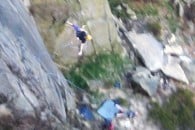

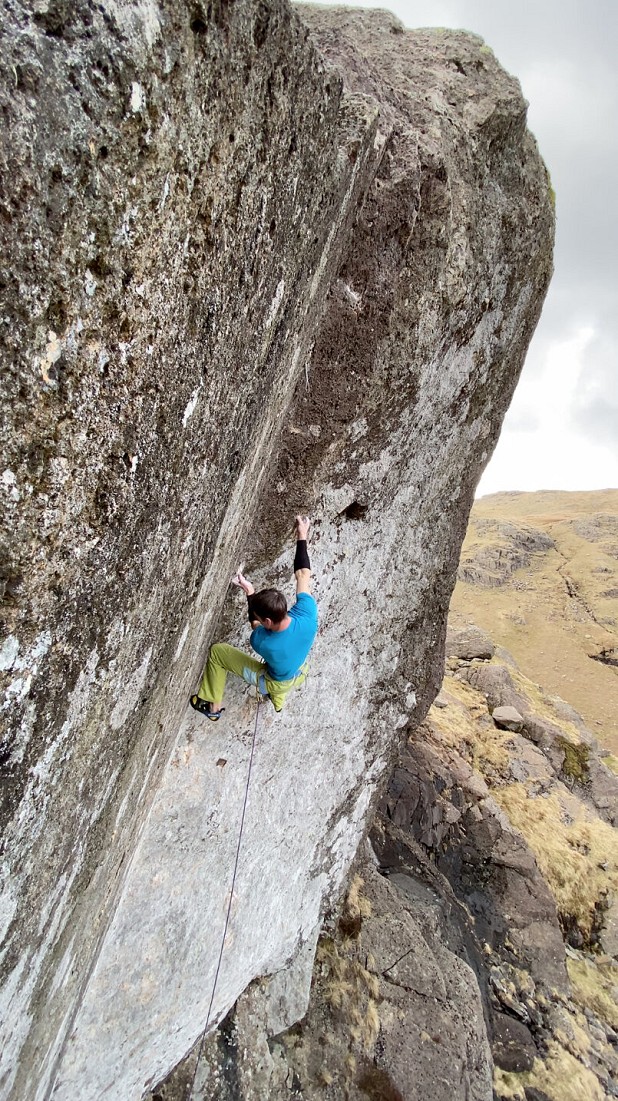
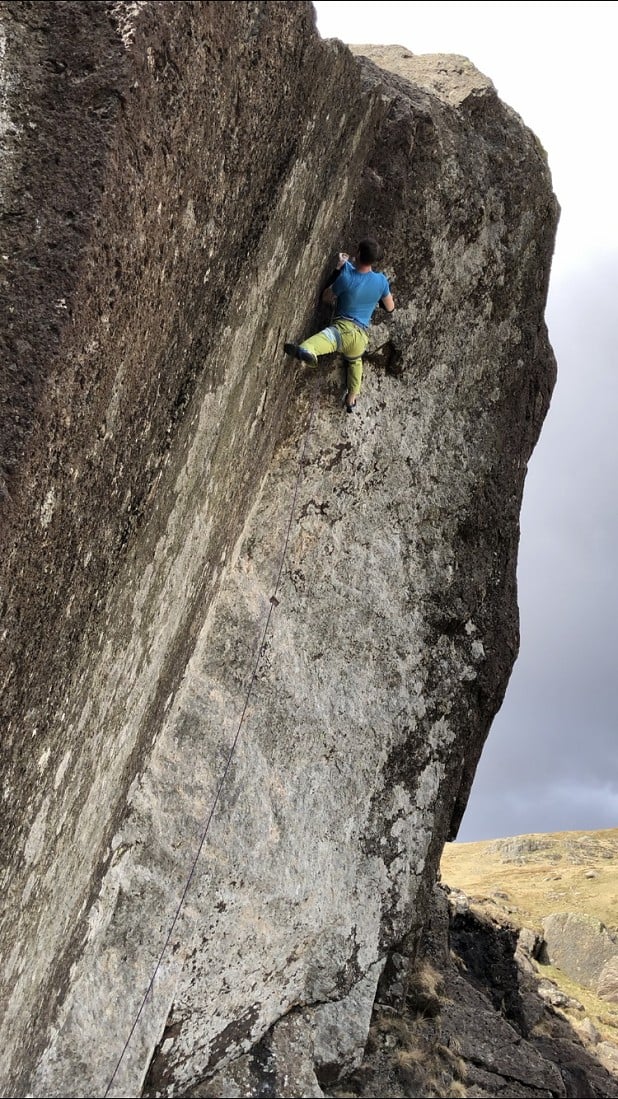
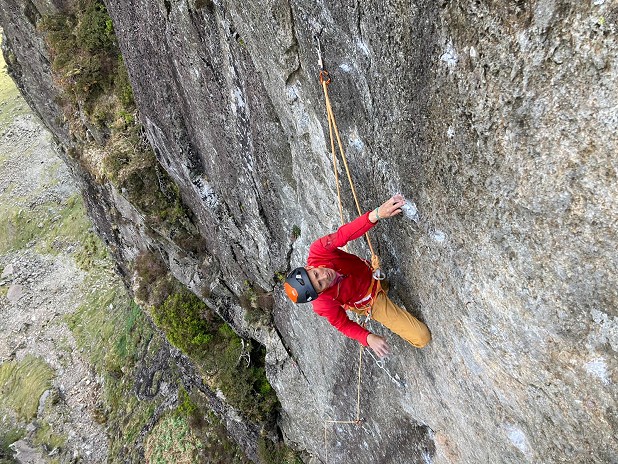
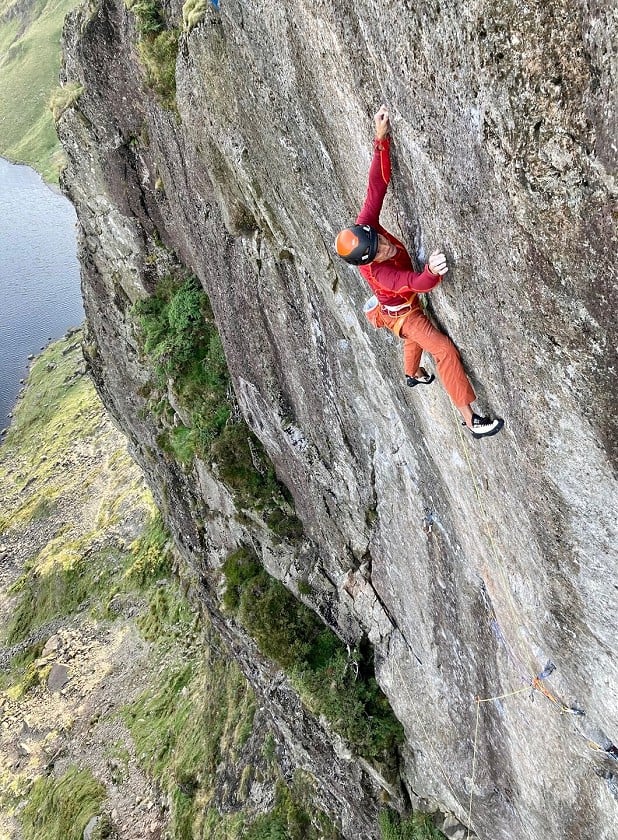
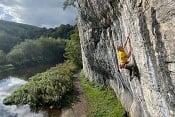

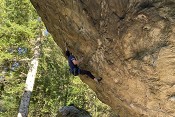
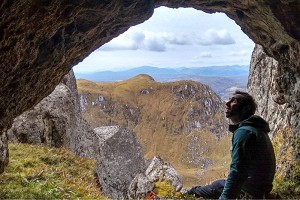
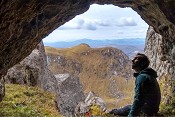
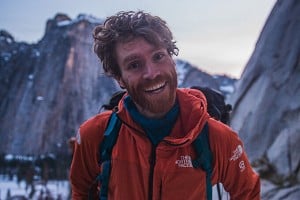







Comments
Worth reading for the Neil Gresham quote alone.
Unbelievable when you add it together like that. Also, Niall McNair did Achemine last week.
Amazing to think that Hold Fast, Hold True (E10 7a) got repeated and no-one knew about it!
The article mentions 4 E11s. Is that Lexicon, Rhapsody, Nothing Lasts and Echo Wall or is the fourth route Immortal and Echo Wall considered a grade above E11?
Minor point but Dyers Lookout is in Devon, not Cornwall